For those of us who typically eat Indian food at a restaurant, dal—that nourishing, soupy dish of spiced split beans or peas or lentils—is often part of a larger ordeal of pulses and curries and such. But if you've ever wanted to take the whole bowl of dal for yourself and push everything else away, you may already know what I'm going to say next: Dal is a meal in itself.
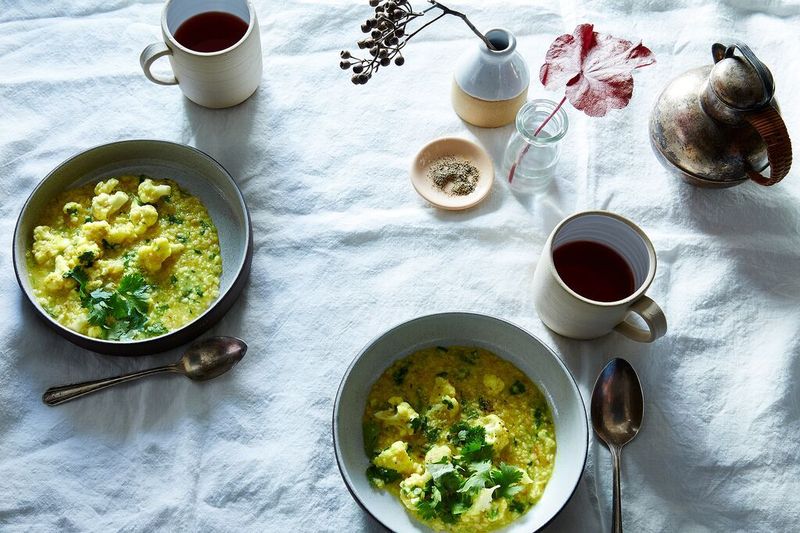
On a weeknight or a lazy Sunday, a creamy, fragrant, and soothing bowl of little legumes hits just the right spot. Making up your own pot is simple, relatively quick, and endlessly variable. Once you get the technique down, you'll never need a recipe. Here’s how to do it:
First things first: Choose your ingredients.
Dal
Traditional Indian preparations often employ specific types of dal for specific instances, but if you're not a stickler for tradition or a purist, you'll find that dals can be interchangeable. Some take longer to cook than others (urad, chana), and they each have subtle flavor nuances (toor dal is a little sweet, moong is buttery, chana is earthy, and urad is a touch bitter), but the technique is largely the same.
My picks are usually on rotation between earthy-sweet unskinned moong dal, the split version of whole mung beans; sweet-tasting split and skinned toor dal, which are split pigeon peas; nutty chana dal, which is the split and skinned black chickpea; and pleasingly bitter urad dal, the split version of black gram beans. These are all easily found in Indian grocery stores or international supermarkets, but you can also make dal with more-easily-found lentils and split peas. Red and yellow lentils and yellow split peas make lovely dal and are easier to find in most bulk bins. Whatever you choose, one cup of dal makes enough for 3 to 4 people.
Aromatics
It’s a good idea to add aromatics to the dal while it simmers. I like to add a knob of crushed ginger with the dal and a bit of turmeric: about 1 teaspoon to 1 cup of dal. If you want to use whole cardamom cloves, bay leaves, or a cinnamon stick, go for it.
Spices and Alliums
Once the dal are tender, you’ll sauté some spices. I shoot for about 2 teaspoons of whole or crushed spices (my go-to is 1 teaspoon of cumin seeds and 1 teaspoon of coriander seeds, the coriander crushed in a mortar and pestle), plus a whole dried chile, torn into pieces, fried in 1 1/2 tablespoons of oil, per 1 cup of dal. As for the fat you cook the spices in, coconut oil, peanut oil, and ghee all add extra layers of flavor; if you want something more neutral, go with grapeseed oil or safflower oil instead. You could also add some garlic or onion or shallots to the tadka.
Vegetables and Herbs
Diced carrots, cauliflower, or broccoli cut into small pieces and chopped leafy greens are favorites. Try 1 to 2 cups of chopped raw vegetables per 1 cup of dal. In terms of herbs, cilantro is always a good call, but parsley can be good, too.
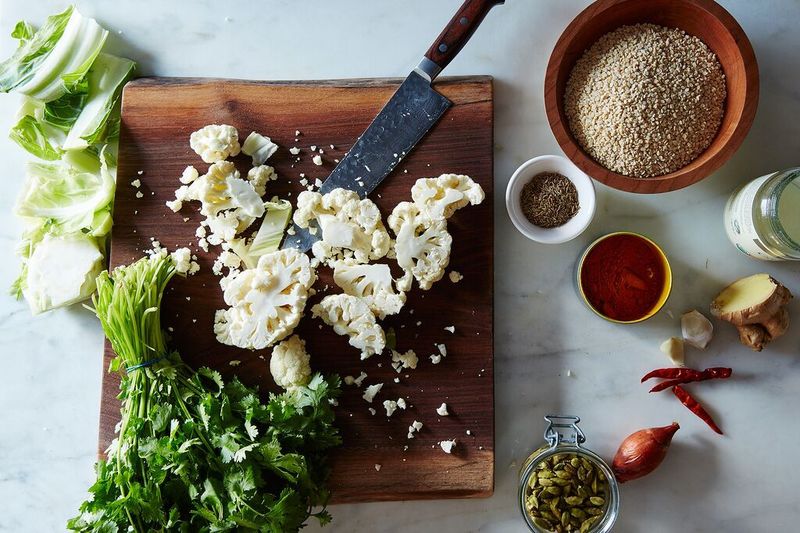
Soak and rinse (or just rinse).
If you've thought ahead, start out by soaking those little legumes. Cover them with water by a few inches, leave to soak for several hours or overnight, then rinse several times with cool water. Soaking is completely optional (no need to fret about it if you want to make dal on a whim), but it does encourage the dal to break down more quickly when you get around to cooking them. Don't skip the thorough rinse, though—this drastically reduces the amount of foam the dal releases as it cooks.
Start cooking your dal. After you've rinsed, cover the dal with water: 1:4 is a good starting ratio, but you can add more water later if need be. Add your aromatics.
Now bring the dal to a simmer, partially cover, and cook, stirring occasionally, until it breaks down and turns thick and creamy. The time will depend on whether you soaked your dal, the type, and whether it's skinned or not (skinned takes less time), but count on anywhere from 30 minutes to an hour. About halfway through cooking, when the dal is tender but not yet creamy, add salt to taste.
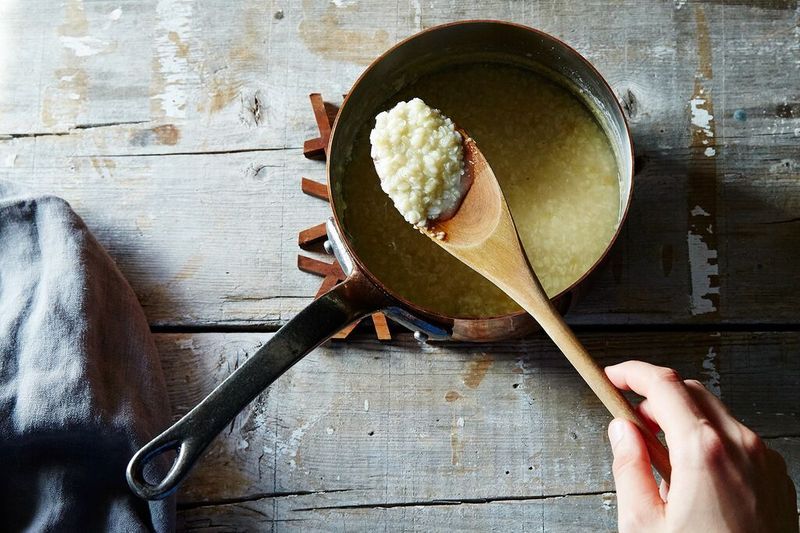
Make the tadka.
Once your dal has a thick, creamy texture, keep it on low heat while you sauté your spices. This step, called a tadka (the d is pronounced a bit like a rolled "r"), is your dal's coming of age. The key is to use enough spices (whole or freshly crushed is best), and to fry them for long enough that they release flavor without burning.
To make the tadka, heat the oil in a small skillet until it's hot.
If you want to include sautéed onions, shallots, and/or garlic in your dal, chop and sauté them first before adding spices to the pan, in which case you'll cook the spices a little longer before adding to the dal, up to a couple of minutes.
Add the spices, and cook for about 45 seconds to one minute, shaking them around in the pan a bit and watching (and smelling) closely to make sure they don't burn. If they do, throw them out and start over. No big deal! When they're nice and fragrant, use a heatproof spatula to scrape them with their oil into the dal and stir well to incorporate. Cook for a few more minutes to marry the flavors.
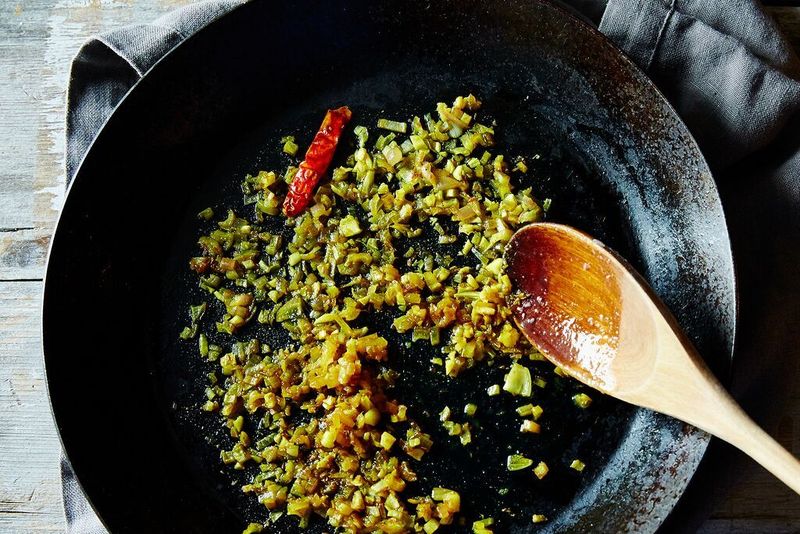
Add veg and herbs if you’d like.
You can taste for seasoning and stop here, but I love adding a few vegetables to the mix for color and texture. Stir your vegetables of choice in, and cook just until they go completely tender (or longer, if you prefer). Stir in herbs last, a handful or two, chopped, per cup of dal.
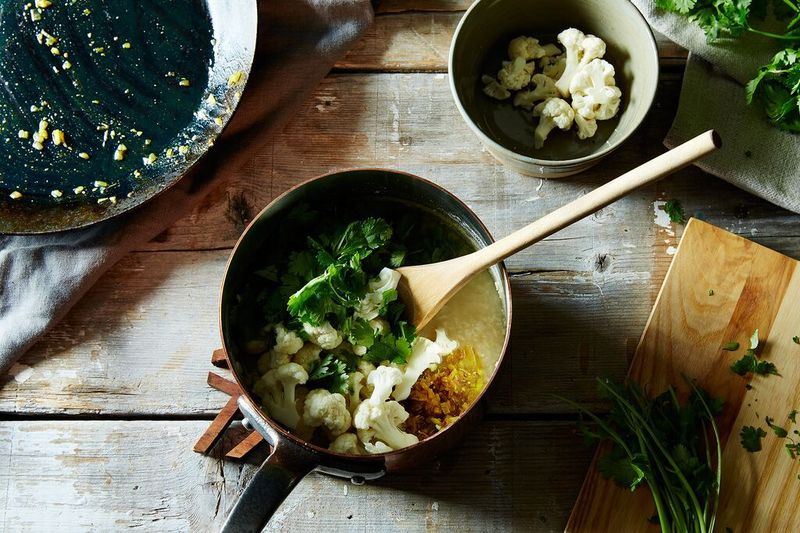
Serve simply or fancily.
You can fancy things up and serve this with a chutney, pickles, and rice, which keeps your palate on its toes and is a little more traditional, but a good dal satisfies on its own. Braise some greens, steam some rice, and pull out your bowls and spoons.
Need a little inspiration? Try these combinations:
- Toor dal, coconut oil, curry leaves, mustard seeds, cumin, black pepper
- Moong dal (unskinned), ginger, turmeric, peanut oil, cumin, coriander, dried red chile, cilantro, broccoli
- Chana dal, ghee, onion, garlic, fennel seed, cumin, coriander, nigella seeds, fenugreek, dried red chile, spinach
- Urad dal, cardamom, ginger, coconut oil, shallots, garlic, cumin, dried red chile, cauliflower, cilantro (what's shown here)

How do you make your favorite dal? Tell us in the comments!
All photos by James Ransom.







See what other Food52 readers are saying.